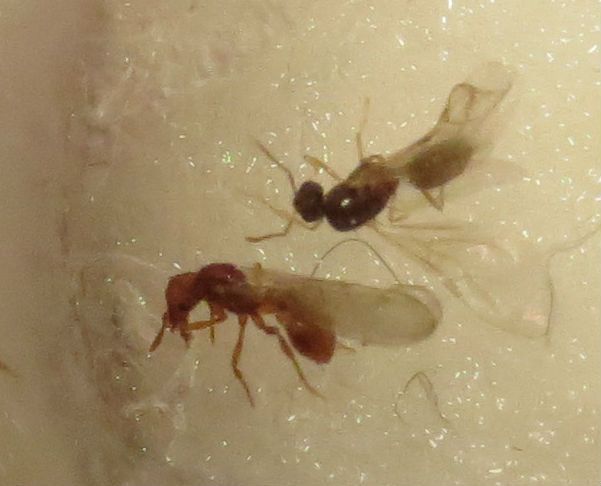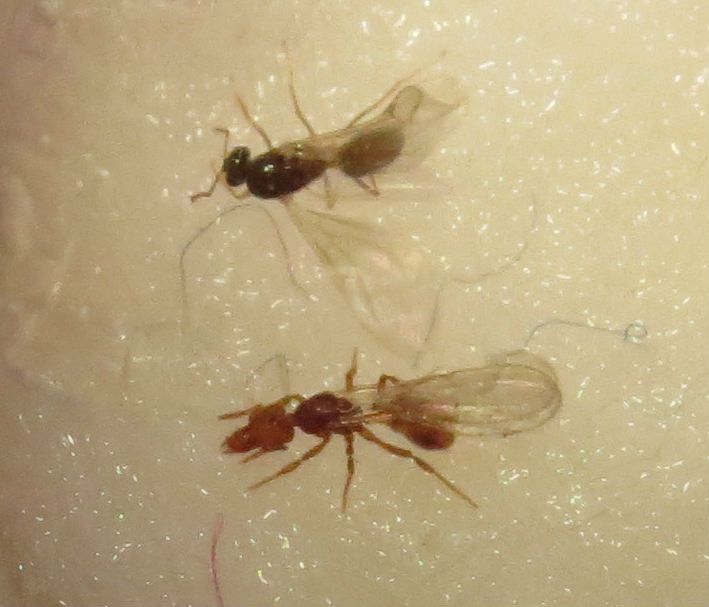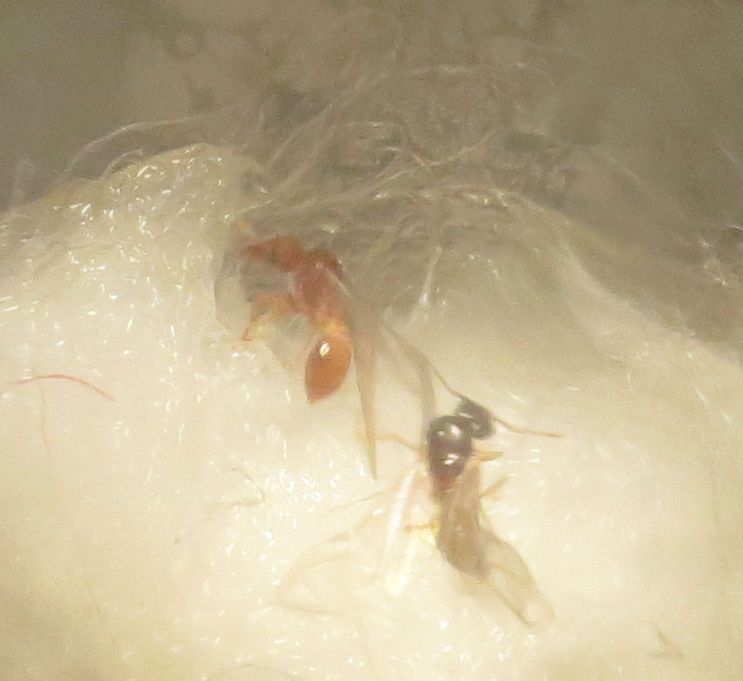Won't go too off topic in this post. But, I've seen Brachymyrmex and Argentine ants having skirmishes with each other, but nothing major. The Argentine ants mostly win (here in Irvine). But one Brachymyrmex worker can injure multiple Argentine ants. And once they block up their nests, the Argentine ants can't do anything. Argentine ants still seem to dominate them, but they lose a lot of workers in the process and the Brachymyrmex don't really lose any and just hide in their nests.
Here in the apartment complex, Brachymyrmex seem to make HUGE colonies (each individual colony is kind of small, but its all inter-connected). In the Summer (their peak numbers) out front of my apartment unit had to have easily been tens of thousands of workers. And in total, had to easily be many thousands of alates all over in the multiple pools (last Summer).
Brachymyrmex always lose out to Monomorium ergatogyna though (if the M. ergatogyna have secured the area) and get driven off by them. The Monomorium ergatogyna have a few colonies around. Argentine ants also get completely driven out by areas with heavy densities of Monomorium ergatogyna too. They stand no chance at all against them. Even native Solenopsis have a hard time with M. ergatogyna (though Solenopsis invicta do okay). M. ergatogyna are native, but get giant colonies and they must have superior attacks compared to most other ants. Plus they are pretty small and also better escape artists than Solenopsis molesta...
Brachymyrmex themselves aren't very aggressive. I tried putting a tiny Monomorium ergatogyna colony (just workers as a test) out front to get rid of the Argentine ants, and the Brachymyrmex weren't having any of it and swarmed the poor workers by the hundreds. And, Brachymyrmex really don't like Argentine ants though can't do much against a huge horde of them. But, mostly they aren't nearly as aggressive as Argentine ants are.
That is my observation with Brachymyrmex in any case from observing them most of last year. And some observations with Monomorium ergatogyna (which have come out of hibernation here in Irvine). Since someone asked about the invasive potential and harm to local fauna, thought I'd put up my own observations.
Edited by Vendayn, February 16 2016 - 9:45 PM.
























